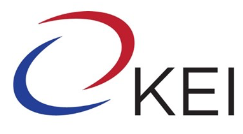Korea's Economy
From the Issue
Korea's Economy Volume 25About Korea's Economy
Korea’s Economy is KEI’s annual journal publication dedicated to the key issues of the day for the Korean economy. Articles in Korea’s Economy are designed to give the casual, but informed reader insight into issues related to Korea’s markets and financial institutions, economic reform, economic relations with the wider world, and North Korea. It is published jointly each year with the Korea Institute for International Economic Policy.
Published May 25, 2011
Download PDFFollowing several years of strong expansion, the Korean economy began losing momentum in the second half of 2008 in the wake of the stress engulfing the global financial system. Although the initial stages of the financial crisis directly affected mainly the United States and western Europe, the crisis became truly global during the course of 2008 as rising risk aversion among cross-border investors reduced capital flows and weakening demand adversely affected global trade. The more open economies, such as Korea’s, were hit the hardest.
In the face of this sharp downturn, the Korean economy confronts a number of challenges in the short to medium term. Softening the impact of the global slowdown and restoring strong growth are the most important immediate tasks, and the Korean government’s policy response in the financial, monetary, and fiscal areas has been comprehensive. Over the medium term, it will be important to pave the way for an even stronger and more dynamic financial sector, establish a sound and vibrant corporate sector (especially small- and medium-size enterprises [SMEs]), and resume fiscal consolidation, especially to meet the challenges stemming from a rapidly aging population.
